Ford Escape: Accessory Drive - 1.5L EcoBoost (132kW/180PS) – I3 (Y1) / Diagnosis and Testing - Accessory Drive
Inspection and Verification
-
Verify the customer concern.
-
Visually inspect for obvious signs of mechanical damage.
Visual Inspection Chart
| Mechanical |
|---|
|
-
If an obvious cause for an observed or reported concern is
found, correct the cause (if possible) before proceeding to the next
step.
Accessory Drive Belt Concerns
NOTICE: Do not lubricate the accessory drive belt as potential damage to the accessory drive belt material construction may occur.
Cracking
Accessory drive belts are made from rubber which hardens with time and can develop cracks. As the accessory drive belt runs on the back of some of the pulleys, the cracks are opened up. Small cracks are not considered to be a failure of the accessory drive belt. Only if the crack is deep enough to reach the bottom of the groove to expose the cord or any chunks are found to be missing from the accessory drive belt, is the accessory drive belt condition considered to be unacceptable.
-
Check the accessory drive belt for cracks. If the damage
exceeds the acceptable limit, install a new accessory drive belt.
REFER to: Accessory Drive Belt (303-05B Accessory Drive - 2.0L EcoBoost (177kW/240PS) – MI4, Removal and Installation).
Chunking
Chunking describes the condition where long lengths of rubber become detached from the ribs of the accessory drive belt. This is considered to be a failure of the accessory drive belt.
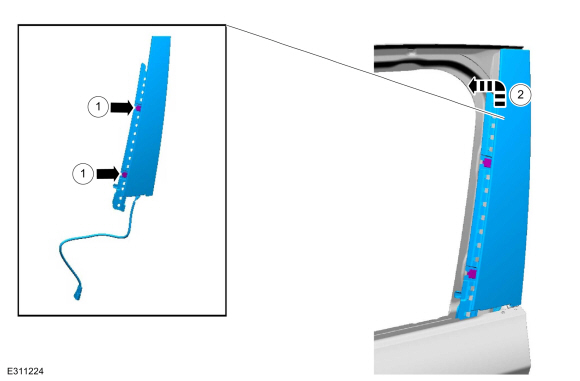
-
Check the accessory drive belt for damage. If any chunks are
found to be missing, install a new accessory drive belt.
REFER to: Accessory Drive Belt (303-05B Accessory Drive - 2.0L EcoBoost (177kW/240PS) – MI4, Removal and Installation).
Pilling
Pilling is dust that forms in between the ribs of the accessory drive belt from rubber that is worn off the accessory drive belt when it is new. There may also be loose particles left on the accessory drive belt during the manufacturing process. These are worn off and form into small balls of rubber that then get trapped in the grooves of the accessory drive belt. This condition will usually clear itself within 4800 km - 8000 km (3000 miles - 5000 miles) of normal driving.
.jpg)
-
Check the accessory drive belt for pilling. The condition of
the accessory drive belt should be compared against the illustration.
-
Small scattered pills. Not considered a concern. No action required.
-
Small scattered pills. Not considered a concern. No action required.
-
Longer pills up to 50% of the rib height. Possible noise
concern. INSTALL a new accessory drive belt if noise is apparent.
REFER to: Accessory Drive Belt (303-05B Accessory Drive - 2.0L EcoBoost (177kW/240PS) – MI4, Removal and Installation).
-
Longer pills up to 50% of the rib height. Possible noise
concern. INSTALL a new accessory drive belt if noise is apparent.
REFER to: Accessory Drive Belt (303-05B Accessory Drive - 2.0L EcoBoost (177kW/240PS) – MI4, Removal and Installation).
-
Heavy deposits in the grooves. Possible noise and stability concern. INSTALL a new accessory drive belt.
REFER to: Accessory Drive Belt (303-05B Accessory Drive - 2.0L EcoBoost (177kW/240PS) – MI4, Removal and Installation).
-
Heavy deposits in the grooves. Possible noise and stability concern. INSTALL a new accessory drive belt.
REFER to: Accessory Drive Belt (303-05B Accessory Drive - 2.0L EcoBoost (177kW/240PS) – MI4, Removal and Installation).
-
Small scattered pills. Not considered a concern. No action required.
Incorrect fitment
Accessory drive belt noise can be generated by the accessory drive belt being incorrectly fitted on the pulley as shown in the following illustration. Make sure that all the V grooves on the accessory drive belt contact correctly with the pulley.
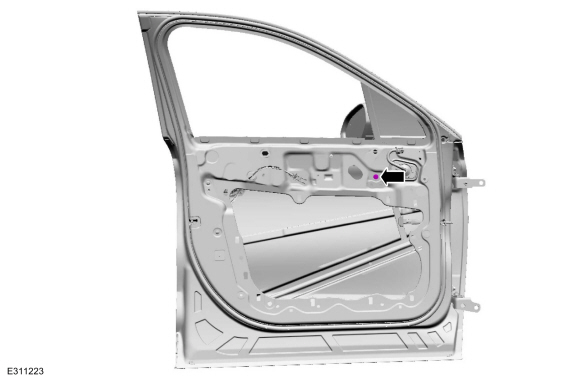
-
If the cause is not visually evident, verify the symptom and refer to the Symptom Chart.
Global Customer Symptom Code (GCSC) Chart
Diagnostics in this manual assume a certain skill level and knowledge of Ford-specific diagnostic practices.
REFER to: Diagnostic Methods (100-00 General Information, Description and Operation).
| Symptom | Action |
|---|---|
| Start/Run/Move > Noise > Running/Standing > Always | GO to Pinpoint Test A |
| Start/Run/Move > Noise > Running/Standing > Always | GO to Pinpoint Test B |
| Start/Run/Move > Noise > Running/Standing > Always | GO to Pinpoint Test C |
Symptom Chart(s)
Symptom Chart: Accessory Drive
Diagnostics in this manual assume a certain skill level and knowledge of Ford-specific diagnostic practices.
REFER to: Diagnostic Methods (100-00 General Information, Description and Operation).
Symptom Chart
| Condition | Actions |
|---|---|
| Accessory drive belt noise | GO to Pinpoint Test A |
| Accessory drive belt chirp | GO to Pinpoint Test B |
| Accessory drive rattle | GO to Pinpoint Test C |
Pinpoint Tests
NOTICE: Do not lubricate the accessory drive belt as potential damage to the accessory drive belt material construction may occur.
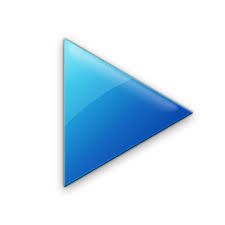 PINPOINT TEST A: ACCESSORY DRIVE BELT NOISE
PINPOINT TEST A: ACCESSORY DRIVE BELT NOISE|
Normal Operation and Fault Conditions
REFER to: Accessory Drive - Component Location (303-05B Accessory Drive
- 2.0L EcoBoost (177kW/240PS) – MI4, Description and Operation). Possible Sources
Visual Inspection and Pre-checks
|
||||
| A1 CHECK FOR THE SOURCE OF THE NOISE. | ||||
Can the source of the noise be identified?
|
||||
| A2 CHECK FOR ACCESSORY DRIVE BELT AND A/C COMPRESSOR BELT FOR CRACKING | ||||
|
NOTE: Accessory drive belts are made from rubber which hardens with time and can develop cracks. As the accessory drive belt runs on the back of some of the pulleys, the cracks are opened up. Small cracks are not considered to be a failure of the accessory drive belt. Only if the crack is deep enough to reach the bottom of the groove to expose the cord or any chunks are found to be missing from the accessory drive belt, is the accessory drive belt condition considered to be unacceptable.
Do the drive belts show signs of cracking?
|
||||
| A3 CHECK FOR ACCESSORY DRIVE BELT AND A/C COMPRESSOR BELT FOR CHUNKING | ||||
|
NOTE: Chunking describes the condition where long lengths of rubber become detached from the ribs of the accessory drive belt. This is considered to be a failure of the accessory drive belt.
Does the drive belts show signs of chunking?
|
||||
| A4 CHECK FOR ACCESSORY DRIVE BELT AND A/C COMPRESSOR BELT FOR PILLING | ||||
|
NOTE: Pilling is dust that forms in between the ribs of the accessory drive belt from rubber that is worn off the accessory drive belt when it is new. There may also be loose particles left on the accessory drive belt during the manufacturing process. These are worn off and form into small balls of rubber that then get trapped in the grooves of the accessory drive belt. This condition will usually clear itself within 4800 km - 8000 km (3000 miles - 5000 miles) of normal driving.
Does the drive belts show signs of pilling?
|
||||
| A5 CHECK FOR INCORRECT, DAMAGED OR CONTAMINATED ACCESSORY DRIVE BELT | ||||
Does the accessory drive belt show signs of incorrectness, damage or contamination?
|
||||
| A6 CHECK FOR INCORRECT, DAMAGED OR CONTAMINATED A/C COMPRESSOR DRIVE BELT | ||||
Does the a/c compressor drive belt show signs of incorrectness, damage or contamination?
|
||||
| A7 CHECK THE ACCESSORY DRIVE BELT FOR INCORRECT FITMENT | ||||
|
NOTE: Accessory drive belt noise can be generated by the accessory drive belt being incorrectly fitted on the pulley. Make sure that all the V grooves on the accessory drive belt contact correctly with the pulley.
Does the accessory drive belt show signs of incorrect fitment?
|
||||
| A8 CHECK THE A/C COMPRESSOR DRIVE BELT FOR INCORRECT FITMENT | ||||
|
NOTE: A/C compressor drive belt noise can be generated by the accessory drive belt being incorrectly fitted on the pulley. Make sure that all the V grooves on the accessory drive belt contact correctly with the pulley.
Does the a/c compressor drive belt show signs of incorrect fitment?
|
 PINPOINT TEST B: ACCESSORY DRIVE BELT CHIRP
PINPOINT TEST B: ACCESSORY DRIVE BELT CHIRP|
NOTE: Chirp is defined as a twittering noise, often intermittent Normal Operation and Fault Conditions
REFER to: Accessory Drive - Component Location (303-05B Accessory Drive
- 2.0L EcoBoost (177kW/240PS) – MI4, Description and Operation). Possible Sources
Visual Inspection and Pre-checks
|
||||
| B1 CHECK FOR THE SOURCE OF THE NOISE. | ||||
Can the source of the noise be identified?
|
||||
| B2 CHECK FOR INCORRECT, DAMAGED OR CONTAMINATED ACCESSORY OR A/C COMPRESSOR DRIVE BELT | ||||
Does the accessory or a/c compressordrive belt show signs of incorrectness, damage or contamination?
|
||||
| B3 CHECK FOR PULLEY MISALIGNMENT | ||||
Are the accessory drive belts running centrally on the flat pulleys?
|
 PINPOINT TEST C: ACCESSORY DRIVE BELT RATTLE
PINPOINT TEST C: ACCESSORY DRIVE BELT RATTLE|
NOTE: Rattle is defined as a metallic knocking noise Normal Operation and Fault Conditions
REFER to: Accessory Drive - Component Location (303-05B Accessory Drive
- 2.0L EcoBoost (177kW/240PS) – MI4, Description and Operation). Possible Sources
|
| Diagnostic steps are not provided for this symptom or DTC. REFER to: Diagnostic Methods (100-00 General Information, Description and Operation). |
Component Tests
Accessory Drive Belt Tensioner - Static Check
The accessory drive belt tensioner may be checked statically as follows:
-
Inspect the area surrounding the accessory drive belt
tensioner for lubricant or other contamination. Rectify any leaks before
installing a new accessory drive belt tensioner. If the accessory drive
belt tensioner is contaminated, do not attempt to clean it as the
damping mechanism inside may be damaged. INSTALL a new accessory drive
belt tensioner as necessary.
REFER to: Accessory Drive Belt Tensioner (303-05A Accessory Drive - 1.5L EcoBoost (132kW/180PS) – I3 (Y1), Removal and Installation).
-
Detach the accessory drive belt in the area of the accessory drive belt tensioner.
-
NOTE: The accessory drive belt tensioner has a damping feature, which is usually a friction device, therefore some friction within the system is normal.
Using the correct tool, move the accessory drive belt tensioner from its relaxed position through its full stroke and back to the relaxed position to make sure there is no excessive stick, grab or bind, and to make sure there is tension on the accessory drive belt tensioner spring.
-
Rotate the accessory drive belt tensioner pulley and
check for damage, freedom of rotation and alignment. INSTALL a new
accessory drive belt tensioner as necessary.
REFER to: Accessory Drive Belt Tensioner (303-05A Accessory Drive - 1.5L EcoBoost (132kW/180PS) – I3 (Y1), Removal and Installation).
-
If the accessory drive belt tensioner meets the above
criteria, proceed to test the accessory drive belt tensioner
dynamically. If the accessory drive belt tensioner does not meet the
above criteria, INSTALL a new accessory drive belt tensioner.
REFER to: Accessory Drive Belt Tensioner (303-05A Accessory Drive - 1.5L EcoBoost (132kW/180PS) – I3 (Y1), Removal and Installation).
Accessory Drive Belt Tensioner - Dynamic Check
The accessory drive belt tensioner may be checked dynamically as follows:
-
With the engine running, observe the accessory drive
belt tensioner movement. The accessory drive belt tensioner should move
(respond) when the engine is accelerated rapidly or when the A/C clutch
cycles ON and OFF (the degree of movement can be up to 4 mm). If the
accessory drive belt tensioner movement is not constant without engine
acceleration or A/C clutch cycling, a pulley or shaft is possibly bent,
out of round, or the damping mechanism inside the accessory drive belt
tensioner may be damaged. INSTALL a new accessory drive belt tensioner
as necessary.
REFER to: Accessory Drive Belt Tensioner (303-05A Accessory Drive - 1.5L EcoBoost (132kW/180PS) – I3 (Y1), Removal and Installation).
-
Excessive accessory drive belt rideout (uneven depth of
grooves in the accessory drive belt) may cause excessive accessory drive
belt tensioner movement. Check the condition by installing a new
accessory drive belt.
REFER to: Accessory Drive Belt (303-05B Accessory Drive - 2.0L EcoBoost (177kW/240PS) – MI4, Removal and Installation).
 Removal and Installation - Accessory Drive Belt - Vehicles Built Up To: 1-October-2020
Removal and Installation - Accessory Drive Belt - Vehicles Built Up To: 1-October-2020
Special Tool(s) /
General Equipment
5 mm Drill Bit
Removal
NOTE:
Removal steps in this procedure may contain installation details.
Refer to: Health and Safety Precautions (100-00 General Information, Description and Operation)...
Other information:
Ford Escape 2020-2025 Service Manual: Removal and Installation - Side Curtain Airbag
Removal WARNING: The following procedure prescribes critical repair steps required for correct restraint system operation during a crash. Follow all notes and steps carefully. Failure to follow step instructions may result in incorrect operation of the restraint system and increases the risk of serious personal injury or death in a crash...
Ford Escape 2020-2025 Service Manual: Removal and Installation - Cabin Heater Coolant Pump
Special Tool(s) / General Equipment Hose Clamp(s) Removal NOTE: Removal steps in this procedure may contain installation details. Remove the front bumper cover. Refer to: Front Bumper Cover (501-19 Bumpers, Removal and Installation)...
Categories
- Manuals Home
- 4th Generation Ford Escape Owners Manual
- 4th Generation Ford Escape Service Manual
- Child Safety Locks
- General Procedures - Brake Service Mode Activation and Deactivation
- Drive Modes
- New on site
- Most important about car
Fastening the Seatbelts
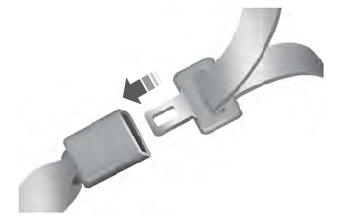

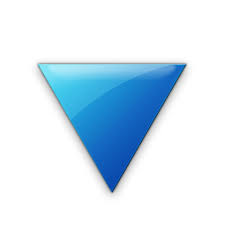 PINPOINT TEST A: ACCESSORY DRIVE BELT NOISE
PINPOINT TEST A: ACCESSORY DRIVE BELT NOISE